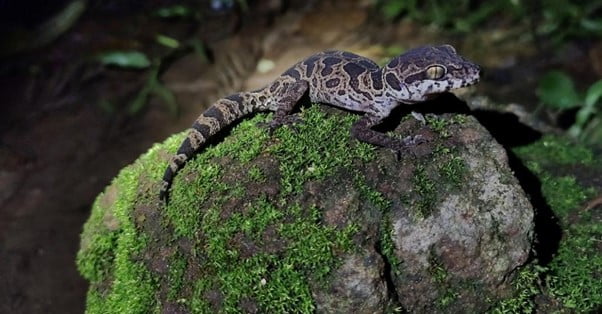Environment & Ecology
In news: A reptile endemic to India, the Jeypore Ground Gecko (Cyrtodactylus jeyporensis), has been included in Appendix II of the Convention on International Trade in Endangered Species (CITES).
- The proposal to include the gecko was made by India at the COP19 to CITES in Panama City.
Jeypore Ground Gecko:
- Cyrtodactylus jeyporensis, is a reptile endemic to India.
- IUCN status: Endangered
- The species is rare and was first described by British officer and amateur naturalist Colonel Richard Henry Beddome in 1878 and rediscovered by a team of researchers led by Ishan Agarwal in 2010 and 2011, after a gap of over 130 years.
- The wild reptile species is found in the Eastern Ghats and is known to be present in four locations including southern Odisha and northern Andhra Pradesh.
- Its occurrence is estimated in less than 5,000 square kilometres of fragmented geographical area.
- The species resides below rock boulders in high forested hills at an altitude of 1,100-1,400 metres.
- Threat: pet trade(both in and outside India), degradation, forest fires, tourism, quarrying and mining activity.
- The species does not occur in the protected areas described under the Wild Life (Protection) Act, 1972, thereby making it highly vulnerable to habitat loss and poaching for domestic and international trade.

About CITES:
- CITES or Convention on International Trade in Endangered Species of Wild Fauna and Flora or Washington Convention, is a multilateral body to protect endangered plants and animals from the threats of international trade.
- Established in IUCN convention in 1963
- Appendix I: which lists species threatened with extinction
- Appendix II: The animals listed under here may not necessarily be threatened with extinction, but trade in such species should be controlled to ensure it does not threaten their existence.
- Appendix III: species are those that are protected in at least one country, and that country has asked other CITES Parties for assistance in controlling the trade and require a CITES export permit for trade.
Source: Down To Earth
Previous Year Question
Q.1) In which of the following regions of India are you most likely to come across the ‘Great Indian Hornbill’ in its natural habitat? (2016)
- Sand deserts of northwest India
- Higher Himalayas of Jammu and Kashmir
- Salt marshes of western Gujarat
- Western Ghats











